India, Europe and Africa 2016
On a rainy morning we headed for Mostar. We travelled on the new, very fast autostrata to where it ended abruptly at the border. Liam adjusted quickly to the potholes and handwritten road signs. Who would have thought learning to drive in Northland would be so handy on the other side of the world! Though I make light of it, the change was the first of many eye-openers during our time in Bosnia- Hercegovina. Before our visit to this part of Europe we knew embarrassingly little about the turbulent history of Yugoslavia and the conflicts around its breakup in the 1990’s. Sadly, the devastation caused by war is still very tangible and though peace holds, there is a lurking sense of incongruity and conflict.
We arrived in Mostar in the pouring rain and Liam did well negotiating the narrow street with two lanes but room for only half a car. The hostel we were staying in was one of the best we've had yet with fresh cherries, delicious Bosnian cake, and lots of advice about the city. It was owned by a Bosniak brother and sister who had both left during the war as refugees. We were grateful for their willingness to share their stories and experiences with us, openly imparting their understanding and perspectives on both the war, and Bosnia-Hercegovina today. We spent the first evening exploring the old part of the city next to the river near the Stari Most (old bridge), which Mostar is so well known for. The bridge was built in the 16th century by the Ottomans and served as a crossing over the Nereteva river, connecting the two sides of the city. It was destroyed by Croat forces during the war but was rebuilt and reopened in 2004. Today it is famous for its bridge-jumpers- locals without employment who jump from the 24m high bridge when tourists will pay them to do so. Unemployment is a large issue in Bosnia, especially for young people. According to some of the people we met, and Wikipedia, unemployment rates are as high as 40-45%. It's possible there is a lot of unofficial employment, but no-one could really tell us how much. As well as this, Visas to work in Europe and other countries are almost impossible to come by if you only have Bosnian citizenship. We felt very aware of the countless opportunities and options we so often take for granted.
The following day went on a day trip visiting the city and surrounding areas with one of the hostel owners. Around Mostar itself, there are scars of the war everywhere you look. Bullet ridden, devastated buildings upon mortar damaged pavements stand aside new and modern apartments and offices. I don’t know how to begin to reflect on the complexity of the conflicts here, but I found this article sharing a story which I think sheds more light than I could in a hundred thousand words. http://www.reuters.com/article/uk-bosnia-mostar-idUSLNE83102N20120402
Outside the city, obvious wounds of fighting are less evident, at least a superficially. We headed to the Kravica waterfall, where Liam and I swam and explored behind the unique curtains and funnels of water created by the tufa formations similar to the ones we saw at Plivice in Croatia. While Liam warmed up in the sun, I chased iridescent blue dragonflies around with my camera. Our second stop was the fortified village of Počitelj, perched in a natural karst amphitheatre overlooking the Neretva river. We had a fabulous afternoon tea in a local home of homemade syrups, fresh cherries, strawberries, home dried figs and apricots, and apple pancakes. Liam and I took a bit of encouraging to leave but our guide managed to move us on and we headed for our last and most dramatic natural site of the day- the Vrelo Bune. Emerging from a hole in the bottom of a 200m vertical rock face is the powerful source of the Buna river, originating from a Karst Spring. Karst springs arise from drainage of a very large area, which is why such a remarkably huge volume of water materialises at the site. The vista was mesmerising and the place inspired an overwhelming feeling of reverence at witnessing something wondrous, where time really did seem to stand still. A Muslim dervish house was built at the site in the 15th century and an annual pilgrimage was happening while we were there. Staying around until midnight to witness their chanting and dancing would have been an amazing experience, but we we were due to head back to the city to end an absorbing time with our guide who showed us how resilient, yet open hearted, the Bosnian people are.
Driving north to Sarajevo we admired the beautiful Neretva valley, driving through a wide gorge with high sheer-rock sides. The weather wasn't perfect but the clouds hanging around the tops of the gorge added to the feel of the place. Looking back I wonder whether we were so stirred by the Bosnian scenery because of how much it was a contrast with it’s history and palpable heartache. We made it through the city to the hostel we were staying at without too much yelling and found hostel which was near Baščaršijathe centre, the old town and the most bustling and vibrant part of the city. Over the next couple of days we visited a number of different excellent museums including a tunnel under the old airstrip, used by the Sarajevo people during the siege to bring supplies in and out of the city. It was about 20minutes out of the city on the other side of a Republika Srbska Army base. The third time we arrived and u-turned at the entrance gate I thought the soldiers must have been wandering what we up to in our Slovenian rental. We had been warned to be careful outside of the city and according to the driver, my navigating wasn't up to scratch. There was significantly more yelling than the day before. The weather want great but we enjoyed wandering the streets and the atmosphere of the old town. In other parts of the city the damage was dispiriting and we reflected on how people who survived the siege might feel, facing the scars of the past every day.
We left Sarajevo and drove south the way we had come, heading for Dubrovnik in Croatia. Instead of staying on the highway, we thought we would explore some of the southwest of Bosnia by driving on rural roads. Unbeknown to us, google maps doesn't know which border crossings still exist and as the road we were taking got narrower and less used-looking by the minute, we realised the goat track we had come along wasn't going to take us to Croatia. It petered out just past a small mostly abandoned village right on the border and we were forced to turn around to find another route, oblivious to the danger of land mines we were later warned about. We eventually found a small café who pointed us in the right direction and from there it was smooth sailing to the coast.
emily.j.buswell
30 chapters
16 Apr 2020
Croatia to Bosnia-Hercegovina
Bosnia
On a rainy morning we headed for Mostar. We travelled on the new, very fast autostrata to where it ended abruptly at the border. Liam adjusted quickly to the potholes and handwritten road signs. Who would have thought learning to drive in Northland would be so handy on the other side of the world! Though I make light of it, the change was the first of many eye-openers during our time in Bosnia- Hercegovina. Before our visit to this part of Europe we knew embarrassingly little about the turbulent history of Yugoslavia and the conflicts around its breakup in the 1990’s. Sadly, the devastation caused by war is still very tangible and though peace holds, there is a lurking sense of incongruity and conflict.
We arrived in Mostar in the pouring rain and Liam did well negotiating the narrow street with two lanes but room for only half a car. The hostel we were staying in was one of the best we've had yet with fresh cherries, delicious Bosnian cake, and lots of advice about the city. It was owned by a Bosniak brother and sister who had both left during the war as refugees. We were grateful for their willingness to share their stories and experiences with us, openly imparting their understanding and perspectives on both the war, and Bosnia-Hercegovina today. We spent the first evening exploring the old part of the city next to the river near the Stari Most (old bridge), which Mostar is so well known for. The bridge was built in the 16th century by the Ottomans and served as a crossing over the Nereteva river, connecting the two sides of the city. It was destroyed by Croat forces during the war but was rebuilt and reopened in 2004. Today it is famous for its bridge-jumpers- locals without employment who jump from the 24m high bridge when tourists will pay them to do so. Unemployment is a large issue in Bosnia, especially for young people. According to some of the people we met, and Wikipedia, unemployment rates are as high as 40-45%. It's possible there is a lot of unofficial employment, but no-one could really tell us how much. As well as this, Visas to work in Europe and other countries are almost impossible to come by if you only have Bosnian citizenship. We felt very aware of the countless opportunities and options we so often take for granted.
The following day went on a day trip visiting the city and surrounding areas with one of the hostel owners. Around Mostar itself, there are scars of the war everywhere you look. Bullet ridden, devastated buildings upon mortar damaged pavements stand aside new and modern apartments and offices. I don’t know how to begin to reflect on the complexity of the conflicts here, but I found this article sharing a story which I think sheds more light than I could in a hundred thousand words. http://www.reuters.com/article/uk-bosnia-mostar-idUSLNE83102N20120402
Outside the city, obvious wounds of fighting are less evident, at least a superficially. We headed to the Kravica waterfall, where Liam and I swam and explored behind the unique curtains and funnels of water created by the tufa formations similar to the ones we saw at Plivice in Croatia. While Liam warmed up in the sun, I chased iridescent blue dragonflies around with my camera. Our second stop was the fortified village of Počitelj, perched in a natural karst amphitheatre overlooking the Neretva river. We had a fabulous afternoon tea in a local home of homemade syrups, fresh cherries, strawberries, home dried figs and apricots, and apple pancakes. Liam and I took a bit of encouraging to leave but our guide managed to move us on and we headed for our last and most dramatic natural site of the day- the Vrelo Bune. Emerging from a hole in the bottom of a 200m vertical rock face is the powerful source of the Buna river, originating from a Karst Spring. Karst springs arise from drainage of a very large area, which is why such a remarkably huge volume of water materialises at the site. The vista was mesmerising and the place inspired an overwhelming feeling of reverence at witnessing something wondrous, where time really did seem to stand still. A Muslim dervish house was built at the site in the 15th century and an annual pilgrimage was happening while we were there. Staying around until midnight to witness their chanting and dancing would have been an amazing experience, but we we were due to head back to the city to end an absorbing time with our guide who showed us how resilient, yet open hearted, the Bosnian people are.
Driving north to Sarajevo we admired the beautiful Neretva valley, driving through a wide gorge with high sheer-rock sides. The weather wasn't perfect but the clouds hanging around the tops of the gorge added to the feel of the place. Looking back I wonder whether we were so stirred by the Bosnian scenery because of how much it was a contrast with it’s history and palpable heartache. We made it through the city to the hostel we were staying at without too much yelling and found hostel which was near Baščaršijathe centre, the old town and the most bustling and vibrant part of the city. Over the next couple of days we visited a number of different excellent museums including a tunnel under the old airstrip, used by the Sarajevo people during the siege to bring supplies in and out of the city. It was about 20minutes out of the city on the other side of a Republika Srbska Army base. The third time we arrived and u-turned at the entrance gate I thought the soldiers must have been wandering what we up to in our Slovenian rental. We had been warned to be careful outside of the city and according to the driver, my navigating wasn't up to scratch. There was significantly more yelling than the day before. The weather want great but we enjoyed wandering the streets and the atmosphere of the old town. In other parts of the city the damage was dispiriting and we reflected on how people who survived the siege might feel, facing the scars of the past every day.
We left Sarajevo and drove south the way we had come, heading for Dubrovnik in Croatia. Instead of staying on the highway, we thought we would explore some of the southwest of Bosnia by driving on rural roads. Unbeknown to us, google maps doesn't know which border crossings still exist and as the road we were taking got narrower and less used-looking by the minute, we realised the goat track we had come along wasn't going to take us to Croatia. It petered out just past a small mostly abandoned village right on the border and we were forced to turn around to find another route, oblivious to the danger of land mines we were later warned about. We eventually found a small café who pointed us in the right direction and from there it was smooth sailing to the coast.
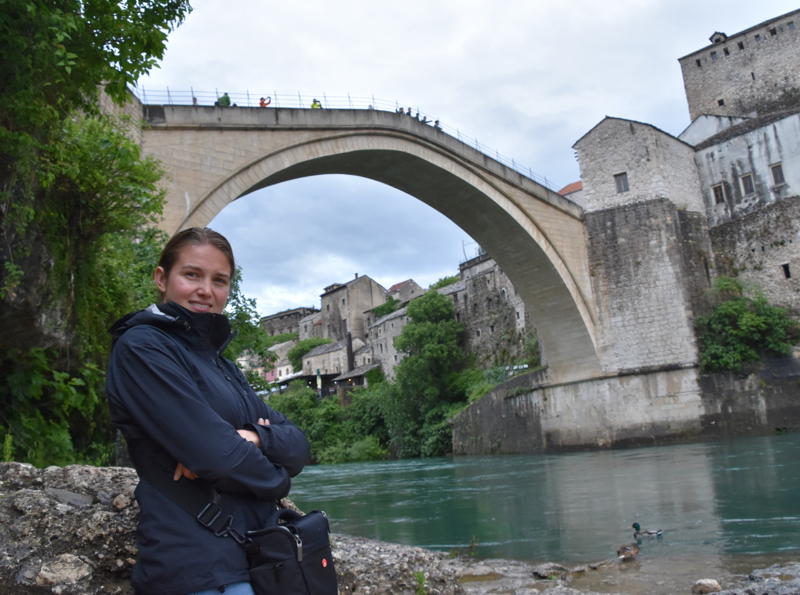
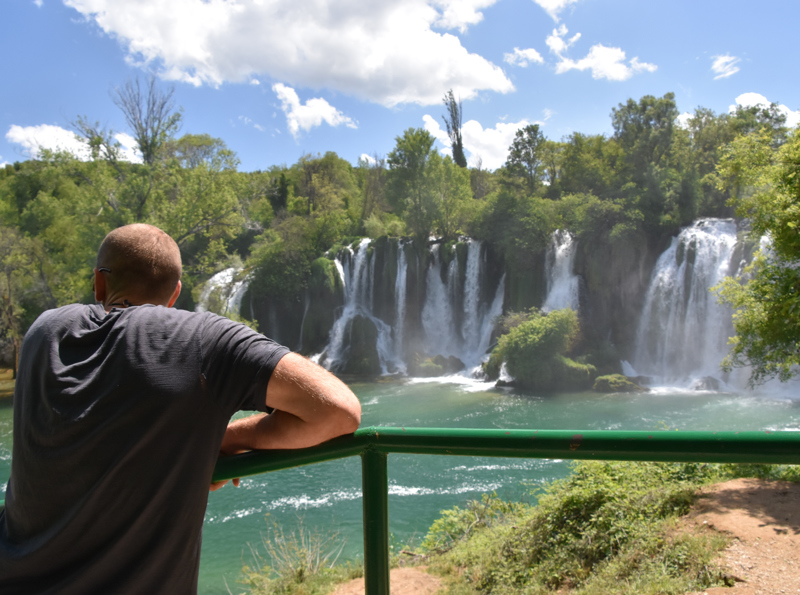
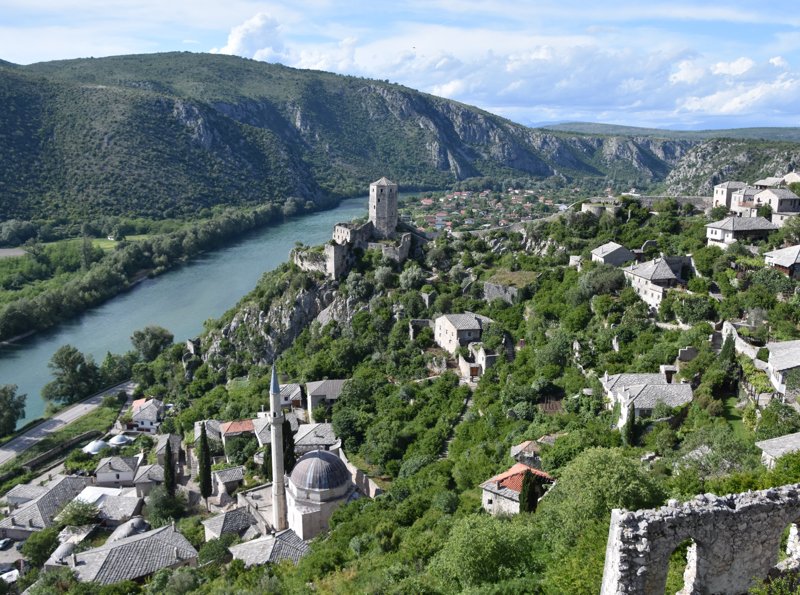
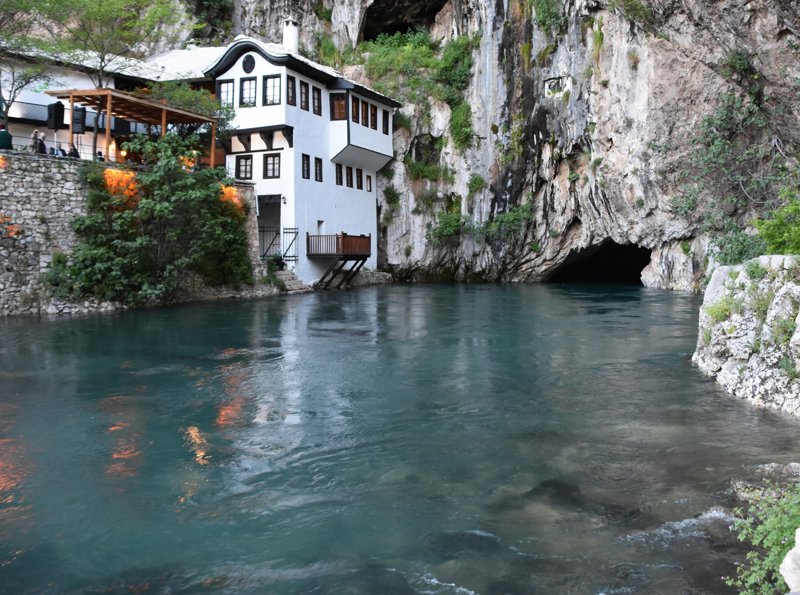
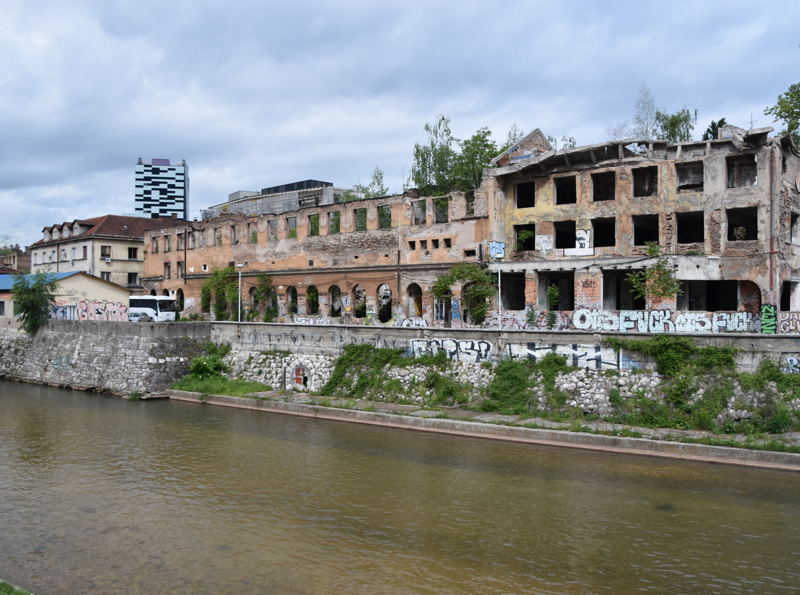
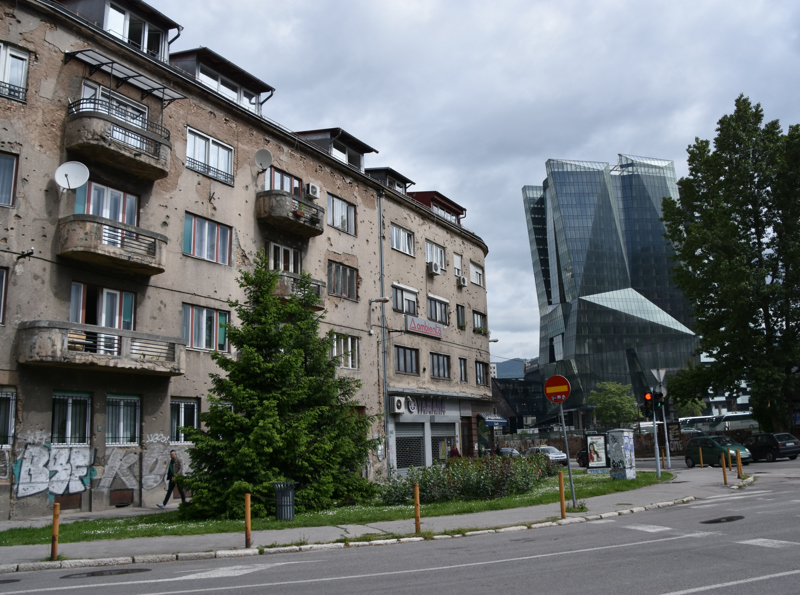
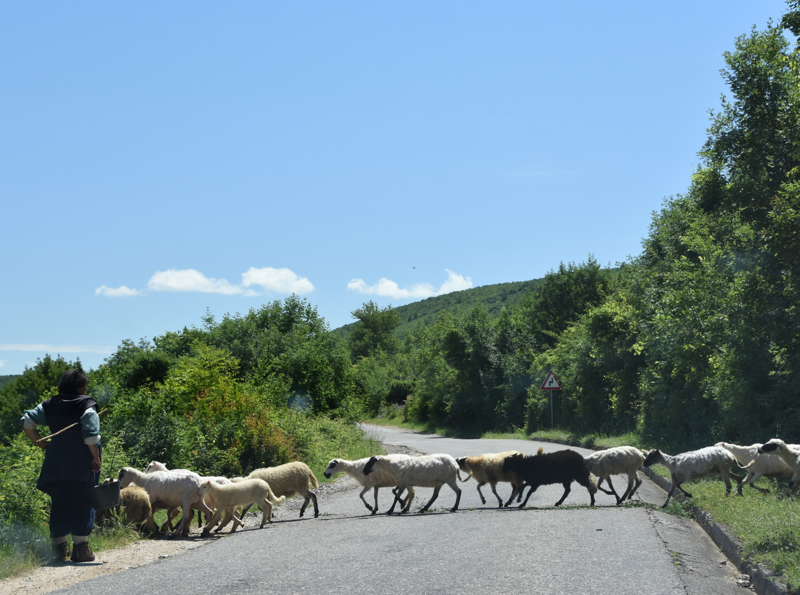
1.
Kolkata to Darjeeling
2.
Darjeeling
3.
Darjeeling to Kurseong
4.
Kurseong to Varanasi
5.
Varanasi to Khajuraho
6.
Khajuraho to Agra
7.
Agra to Jaipur
8.
Jaipur to Pushkar
9.
Pushkar to Bundi
10.
Bundi to Jodhpur
11.
Jodhpur to Jaisalmer
12.
Jaisalmer to Delhi
13.
Delhi to London
14.
London to Waterford
15.
Waterford to Tralee
16.
Tralee to Westport
17.
Westport to Mullingar
18.
Mullingar to Donegal
19.
Donegal to Belfast
20.
Belfast to Dublin
21.
Dublin to Berlin
22.
Berlin to Marburg
23.
Marburg to Munich
24.
Munich to Salzburg
25.
Salzburg to Ljubljana
26.
Ljubilana to Lake Bled and Postojna
27.
Postojna to Croatia part one
28.
Croatia to Bosnia-Hercegovina
29.
Bosnia to Croatia part 2
30.
Croatia to Italy